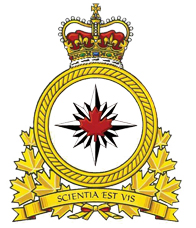Foreign Domestic Afghanistan: GDI Algeria: CSS Angola: SINSE Argentina: SIDE Armenia: NSS Australia: ASIO Austria: DSN Azerbaijan: DTX Bangladesh: SB Belarus: KGB RB Belgium: VS/SE Bosnia and Herzegovina: SIPA Botswana: DIS Brazil: PF Brunei: IRD Bulgaria: DANS Burundi: SNR Canada: CSIS Chad: DGSSIE Chile: ANI China: MSS Colombia: DNI Congo (Democratic Republic of): ANR Croatia: SOA Czech Republic: BIS Denmark: PET Egypt: NSA Estonia: KAPO Finland: SUPO France: DGSI Georgia: SSSG Germany: BfV , LfV Ghana: GPS , CID Greece: EYP Hong Kong: NSD , CPGNSO Hungary: AH India: IB Indonesia: Baintelkam Polri (id ), BIN Iran: VAJA , IRGC , PAVA Ireland: CSB , SDU , NSU Israel: Shin Bet Italy: AISI Japan: NPA , TMPD PSB , PSIA Kazakhstan: NSC Kenya: NIS Kosovo: AKI Latvia: VDD Lithuania: STT Lebanon: ISF IB , LSS Luxembourg: SREL Macau: DS Malaysia: SB Moldova: SIS Morocco: DGST Netherlands: NCTV New Zealand: NZSIS Nigeria: SSS North Korea: SSD North Macedonia: IA Norway: PST Oman: ISS Pakistan: IB , FIA Palestine: PPS Paraguay: SNI Peru: DINI Philippines: NBI , NICA Poland: ABW , SOP , SM Portugal: SIS Romania: SRI Russia: FSB Saudi Arabia: Mabahith Serbia: BIA Singapore: ISD Somalia: NISA South Africa: SSA South Korea: Intelligence Bureau, KNPA Spain: CITCO Sri Lanka: SIS Sweden: SÄPO Switzerland: NDB Syria: GIS Taiwan: MJIB Thailand: ISOC , SB Togo: ANR Turkey: MİT , İB Uganda: ISO Ukraine: SBU United Kingdom: Security Service (MI5 ) , NDEDIU , NCA , NBIS United States: I&A (DHS) , ID (HSI) , IB (FBI) , ONSI (DEA) , OSII (ATF) Uzbekistan: SNB Venezuela: SEBIN Vietnam: TC5 (vi ) Zimbabwe: CIO Military Algeria: DCSA Angola: SIM Australia: DIO Austria: HNaA Bangladesh: DGFI Belarus: GRU MO RB Belgium: ADIV/SGRS Brazil: DIE Canada: CFINTCOM Chad: DGSSIE China: CMC JSD Intelligence Bureau Congo (Democratic Republic of): DEMIAP Croatia: VSOA Cuba: DCIM Czech Republic: VZ Denmark: FE Egypt: DMISR Finland: PE TIEDOS France: DRM , DGSE Germany: MAD Ghana: MIU Hungary: KNBSZ Iran: General Staff , SAHEFAJA , SAHEFASA , SAHEFAVEDJA India: DMI , DIA Indonesia: BAIS TNI , Pusintelad Ireland: IMIS Israel: Aman Italy: CII Japan: DIH Kazakhstan: NSC Lithuania: AOTD Malaysia: DIO Maldives: MNDF Morocco: DB Myanmar: Sa Ya Pa Netherlands: MIVD New Zealand: DDIS Nigeria: DIA North Korea: RGB North Macedonia: MSSI Norway: E-tjenesten Pakistan: MI , NI , AI Palestine: MIS Philippines: ISAFP Poland: SKW , SWW Portugal: CISMIL Romania: DGIA Russia: GRU Saudi Arabia: AFISC Serbia: VBA , VOA Singapore: MIO Slovakia: VS Slovenia: OVS South Africa: SANDF-ID South Korea: DIA , DCC Spain: CIFAS Sri Lanka: DMI Sweden: MUST Switzerland: MND , LWND Syria: MI , AFID Taiwan: MIB Thailand: AFSC Turkey: GENKUR İ.D.B. Ukraine: HUR MO United Kingdom: DI United States: DIA Venezuela: DGCIM Vietnam: TC2 Signals Australia: ASD Bangladesh: NTMC Brazil: 2ª Sch/EMD Canada: CSE China: SIGINT Croatia: OTC Ethiopia: INSA Finland: PVTIEDL France: DGSE , DRSD Germany: BND Ghana: RDU India: JCB , NTRO Indonesia: BSSN (id ) Ireland: CIS Israel: 8200 Japan: DIH Kazakhstan: NSC Netherlands: NSO , JSCU New Zealand: GCSB North Korea: RGB Norway: NSM Pakistan: JSIB Poland: AW , ABW , SKW , SWW , NCBC , gOR 3.FO , CRiWWRE , 2.ORel , 6.ORel , JW NIL Romania: STS Russia: Spetssvyaz Saudi Arabia: PSS South Africa: SSA Spain: CCN Sweden: FRA Switzerland: NDB Syria: MI Turkey: MİT-SİB UAE: SIA Ukraine: Derzhspetszviazok United Kingdom: GCHQ United States: NSA Imagery Financial Criminal Argentina: DNIC Australia: ACIC Bangladesh: CID Canada: CISC Finland: NBI India: CBI Indonesia: Baintelkam Polri (id ) Italy: DIA , DIGOS Philippines: NBI , PNP-IG Poland: BWiIK KGP , CBŚP , ZOŚ KGSG , ZK KGŻW Romania: DGPI South Africa: Crime Intelligence Division Spain: CGI , SIGC , CGPJ , UCO United Kingdom: NCA United States: IB (FBI) , ONSI (DEA) , OSII (ATF) , ID (HSI) Intelligence Intelligence Defunct British Raj : Indian Civil Service (Indian Imperial Police , Indian Political Intelligence Office ) Cambodia under the Khmer Rouge : Santebal Confederate States of America : Confederate Secret Service Dutch East Indies : Politieke Inlichtingendienst , Netherlands East Indies Forces Intelligence Service Fascist Italy : OVRA Gaddafi Libya : Mukhabarat el-Jamahiriya Imperial Japan : Battotai , Tokko Kingdom of France : Cabinet noir , Secret du Roi Ming Dynasty : Embroidered Uniform Guard , Eastern Depot , Western Depot [ zh ] Internal Depot [ zh ] Ottoman Empire : Yıldız Intelligence Agency , Special Organisation , Umur-u Hafiye Pahlavi Iran : SAVAK , Second Bureau of Imperial Iranian Army Prussia : Prussian Secret Police Republic of China : NBIS Roman and Byzantine Empires : Frumentarii , Agentes in rebus , Bureau of Barbarians Tsardom and Empire of Russia : Oprichniki , Okhrana , Special Chancellery , Third Section of His Imperial Majesty's Own Chancellery Nazi Germany : Gestapo , Sicherheitsdienst Soviet Union : NKVD , KGB United Kingdom : DMI United States : Office of Strategic Services Wang Jingwei regime : Jessfield 76 [ zh ; de ; ja ] Yugoslavia : KOS Related 